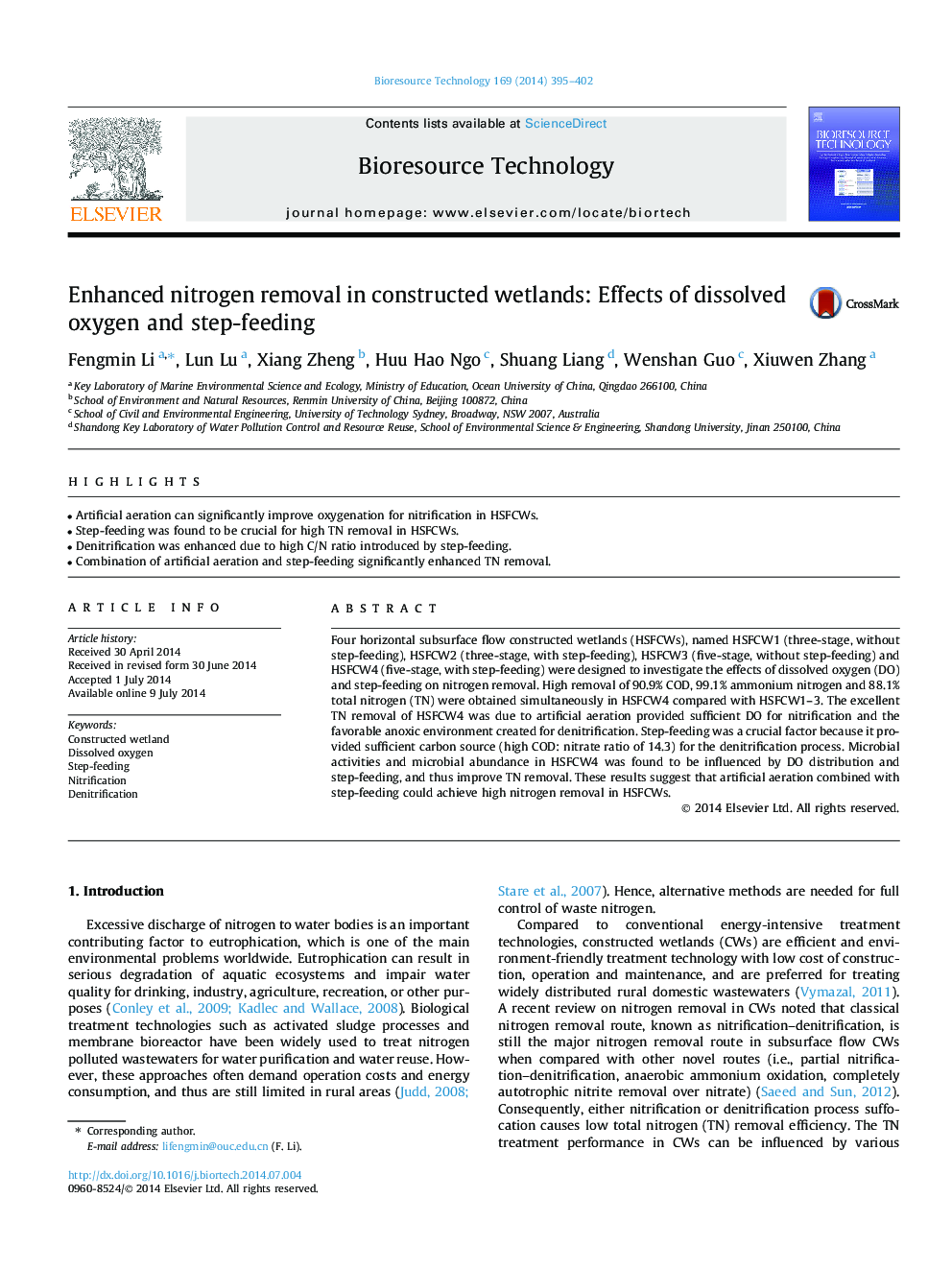| Article ID | Journal | Published Year | Pages | File Type |
|---|---|---|---|---|
| 680613 | Bioresource Technology | 2014 | 8 Pages |
•Artificial aeration can significantly improve oxygenation for nitrification in HSFCWs.•Step-feeding was found to be crucial for high TN removal in HSFCWs.•Denitrification was enhanced due to high C/N ratio introduced by step-feeding.•Combination of artificial aeration and step-feeding significantly enhanced TN removal.
Four horizontal subsurface flow constructed wetlands (HSFCWs), named HSFCW1 (three-stage, without step-feeding), HSFCW2 (three-stage, with step-feeding), HSFCW3 (five-stage, without step-feeding) and HSFCW4 (five-stage, with step-feeding) were designed to investigate the effects of dissolved oxygen (DO) and step-feeding on nitrogen removal. High removal of 90.9% COD, 99.1% ammonium nitrogen and 88.1% total nitrogen (TN) were obtained simultaneously in HSFCW4 compared with HSFCW1–3. The excellent TN removal of HSFCW4 was due to artificial aeration provided sufficient DO for nitrification and the favorable anoxic environment created for denitrification. Step-feeding was a crucial factor because it provided sufficient carbon source (high COD: nitrate ratio of 14.3) for the denitrification process. Microbial activities and microbial abundance in HSFCW4 was found to be influenced by DO distribution and step-feeding, and thus improve TN removal. These results suggest that artificial aeration combined with step-feeding could achieve high nitrogen removal in HSFCWs.
